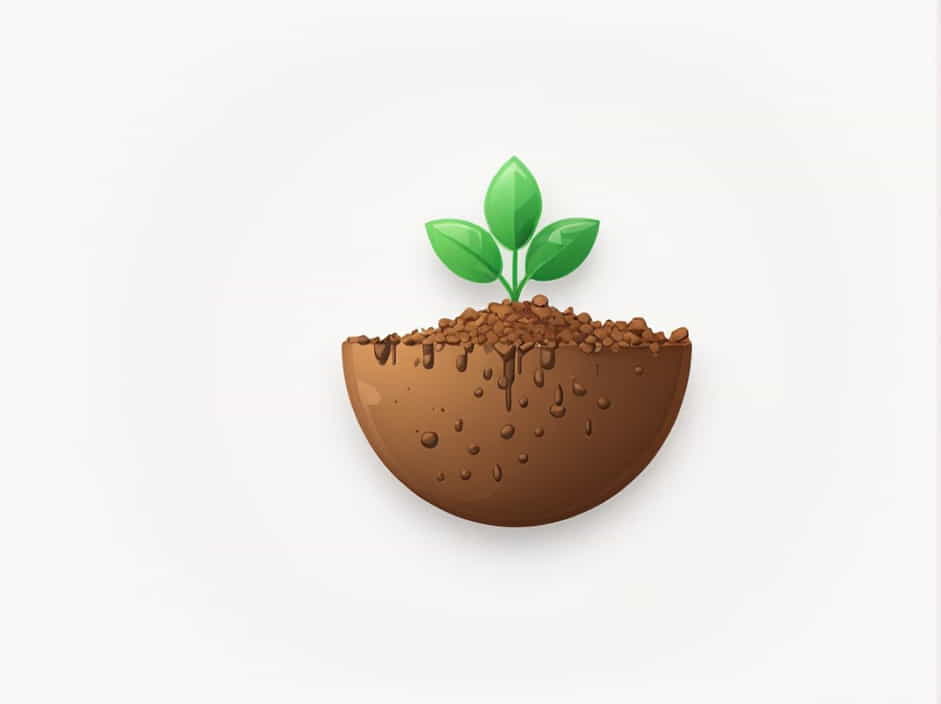The uppermost layer of soil plays a crucial role in sustaining life on Earth. It is where plants grow, organisms thrive, and essential nutrients accumulate. This layer is known as the topsoil, and it is the most fertile and biologically active part of the soil profile.
Understanding topsoil is important for agriculture, gardening, environmental conservation, and soil management. It affects crop yield, water retention, and ecosystem balance.
In this topic, we will explore the characteristics of topsoil, its formation, composition, importance, and how to protect it from erosion and degradation.
What Is the Uppermost Layer of Soil?
The topsoil (also called the O-horizon or A-horizon) is the uppermost layer of soil that contains organic matter, minerals, and microorganisms.
It is the most fertile soil layer and is essential for plant growth, soil biodiversity, and nutrient cycling.
Topsoil varies in thickness, texture, and composition depending on climate, location, and land use.
Composition of Topsoil
Topsoil is made up of several key components that support plant life and ecosystem functions:
1. Organic Matter
- Decomposed plants, leaves, and animal remains form humus, which enriches soil fertility.
- Humus improves water retention and aeration.
2. Minerals
- Contains essential nutrients like nitrogen, phosphorus, and potassium.
- Formed from weathered rocks and sediments.
3. Microorganisms
- Bacteria, fungi, and earthworms help break down organic material and cycle nutrients.
- Beneficial microbes improve soil health and plant resistance.
4. Water and Air
- Water nourishes plants and transports nutrients.
- Air pockets allow root respiration and support microbial activity.
How Topsoil Forms
Topsoil formation is a slow process that takes hundreds to thousands of years. It develops through:
1. Weathering of Rocks
- Rocks break down into smaller ptopics due to wind, water, and temperature changes.
2. Organic Matter Accumulation
- Dead plants and animals decompose, adding nutrients and improving soil structure.
3. Microbial Activity
- Microorganisms help break down organic matter and release nutrients into the soil.
4. Interaction with Climate and Vegetation
- Rainfall and plant roots affect soil formation, erosion, and nutrient distribution.
Due to its slow formation, topsoil is considered a non-renewable resource if not properly managed.
Importance of Topsoil
Topsoil is vital for plant growth, food production, and ecosystem stability.
1. Supports Plant Growth
- Provides essential nutrients for crops, trees, and vegetation.
- Holds water and air necessary for root development.
2. Enhances Soil Fertility
- Rich in organic matter and minerals needed for healthy plants.
- Microorganisms help convert nutrients into forms plants can absorb.
3. Promotes Biodiversity
- Home to earthworms, insects, fungi, and bacteria that improve soil structure.
- Supports food chains and ecological balance.
4. Helps in Water Retention and Drainage
- Prevents waterlogging by allowing water to penetrate deeper layers.
- Reduces soil erosion and runoff, protecting water quality.
5. Essential for Agriculture
- Without fertile topsoil, crop production would decline.
- Farmers use compost, crop rotation, and cover crops to maintain soil quality.
Threats to Topsoil
Topsoil is vulnerable to degradation, erosion, and pollution due to human activities and natural factors.
1. Soil Erosion
- Wind and water can wash away or blow away nutrient-rich soil.
- Deforestation and overgrazing accelerate soil loss.
2. Over-Farming and Poor Agricultural Practices
- Intensive farming depletes soil nutrients faster than they can be replenished.
- Monocropping reduces soil biodiversity and fertility.
3. Deforestation
- Cutting down trees removes root systems that hold soil in place.
- Leads to soil degradation and increased erosion.
4. Pollution and Chemical Use
- Pesticides, herbicides, and industrial waste contaminate soil and kill beneficial microbes.
- Acid rain alters soil chemistry, making it less fertile.
5. Climate Change
- Rising temperatures affect soil moisture and organic matter decomposition.
- Increased rainfall can cause soil erosion and nutrient loss.
Protecting topsoil is essential for food security, environmental health, and sustainable agriculture.
How to Protect and Improve Topsoil
1. Use Cover Crops
- Planting cover crops (e.g., clover, legumes) prevents soil erosion and adds nutrients.
2. Practice Crop Rotation
- Alternating crops maintains soil health and prevents nutrient depletion.
3. Reduce Tillage
- No-till farming preserves soil structure and organic matter.
4. Add Organic Matter
- Compost, manure, and mulch enrich topsoil and boost microbial activity.
5. Control Water Runoff
- Terracing, contour plowing, and buffer strips reduce erosion and retain soil moisture.
6. Avoid Chemical Overuse
- Using natural fertilizers and pest control methods protects soil organisms.
7. Reforest and Plant Trees
- Tree roots bind soil, prevent erosion, and improve soil stability.
8. Encourage Earthworms and Microbial Life
- Worms aerate soil and enhance nutrient cycling.
- Beneficial bacteria help break down organic material into nutrients.
By following these practices, topsoil can remain fertile and productive for future generations.
The Future of Topsoil Conservation
As global populations grow, protecting topsoil is more important than ever.
- Sustainable farming methods can reduce soil degradation.
- Government policies can encourage responsible land management.
- Technological advancements like precision agriculture help optimize soil use.
If topsoil continues to degrade, food production, water quality, and biodiversity will suffer.
Investing in topsoil conservation ensures that future generations can benefit from healthy, productive land.
The uppermost layer of soil, known as topsoil, is critical for plant growth, biodiversity, and ecosystem balance.
- It contains organic matter, minerals, and microorganisms essential for soil fertility.
- It is threatened by erosion, deforestation, pollution, and climate change.
- Sustainable practices like crop rotation, composting, and reduced tillage help protect and restore topsoil.
By understanding and conserving topsoil, we can ensure long-term agricultural productivity and environmental sustainability.
